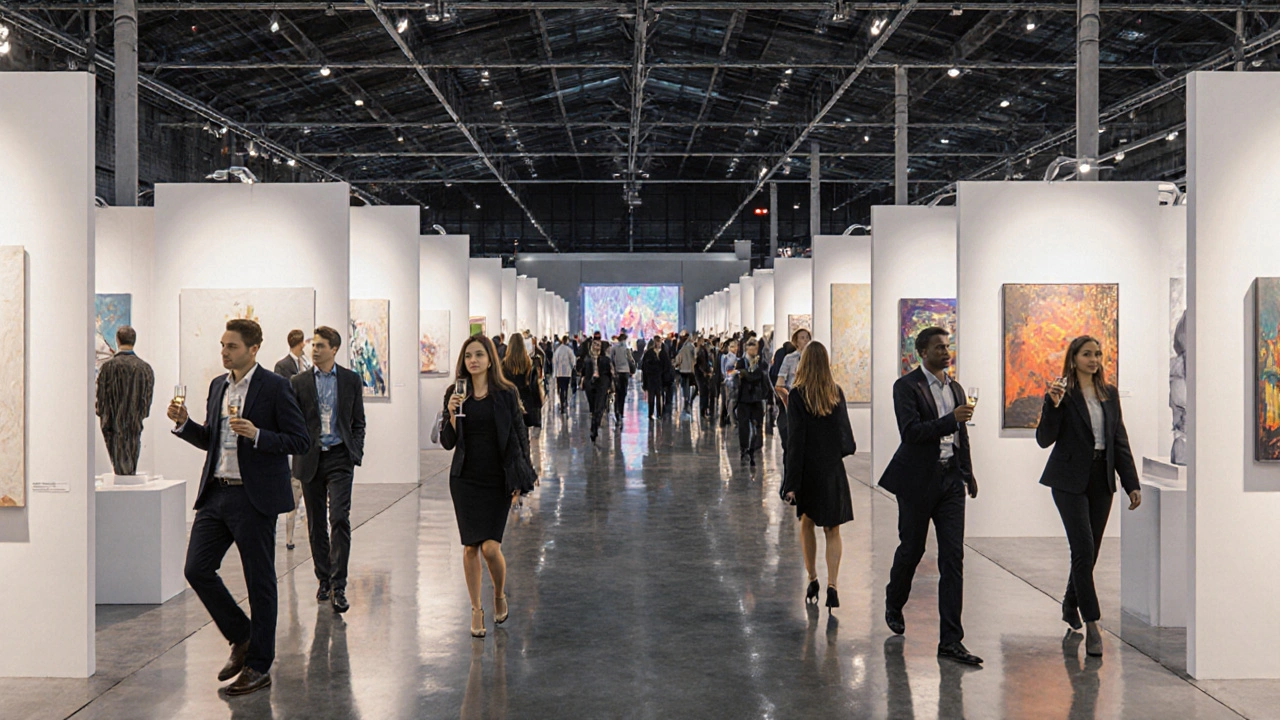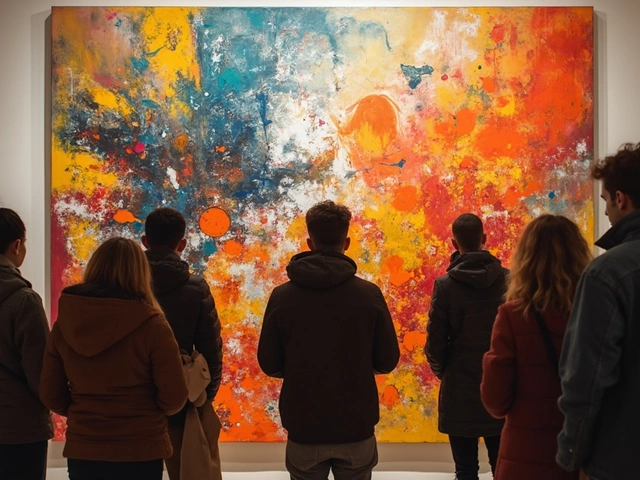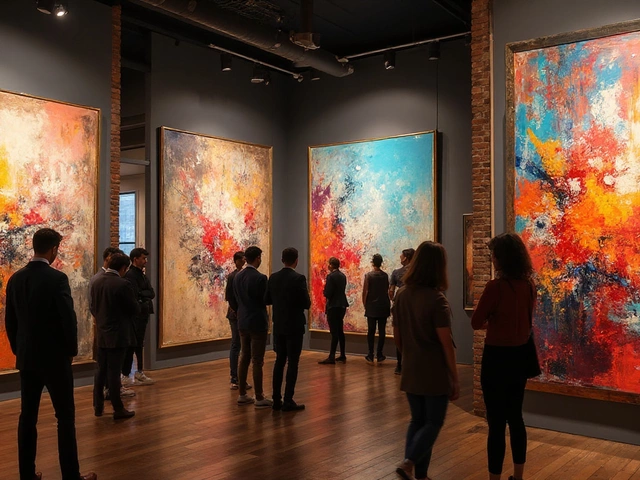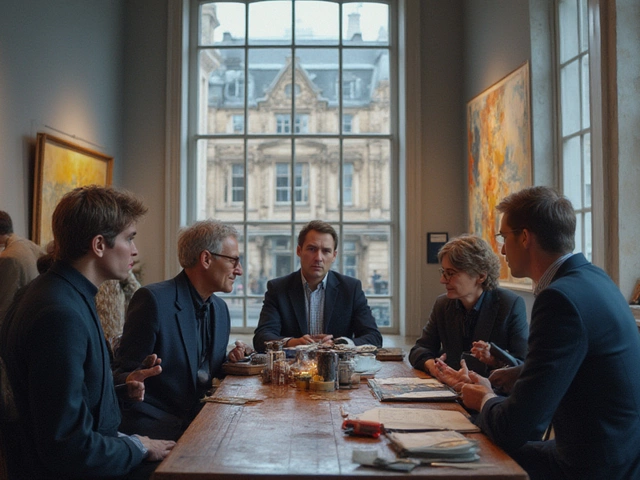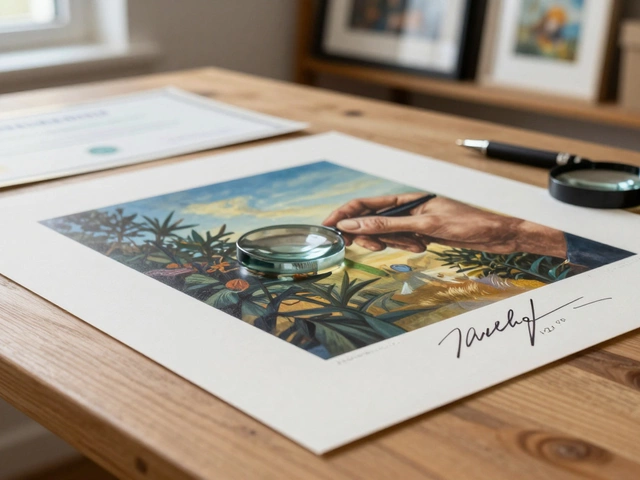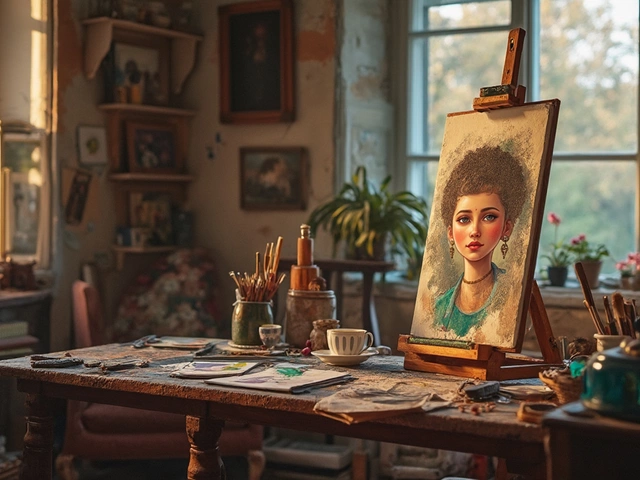When you hear the terms Art Fair is a temporary, large‑scale event where galleries, museums, and independent curators showcase works for sale or promotion, usually in a dedicated venue such as a convention center or historic building, you might picture bustling aisles, pop‑up booths, and a crowd of collectors. Art Exhibition is a curated display of artworks-often within a single gallery, museum, or alternative space-focused on a theme, an artist, or a movement, and it may or may not involve sales. The difference between art fair and art exhibition often confuses newcomers, but once you break down the core elements-purpose, layout, audience, and economics-the picture becomes crystal clear.
Origins and Evolution
Both formats have deep roots, but they grew out of different cultural needs. Art fairs trace back to the 19th‑century European trade fairs where merchants displayed a wide array of goods, including paintings. The first modern art fair, the Armory Show in 1913, introduced American audiences to avant‑garde European art and set the template for a marketplace that mixed commerce with discovery.
Art exhibitions, on the other hand, emerged from the museum tradition. The 1793 British Institution held the first public exhibition of contemporary British art, aiming to educate the public and celebrate national talent. Over time, exhibitions became the primary way museums communicated ideas-think of the 1969 “The New York School” show that defined abstract expressionism.
Primary Purpose
- Art Fair: Generate sales, launch new artists, and create networking opportunities for galleries and collectors.
- Art Exhibition: Present a curated narrative, explore a theme, or showcase a single artist’s oeuvre; sales are secondary or optional.
Because the purpose drives everything else, you’ll notice distinct differences in how each is organized.
Structure and Physical Layout
Imagine walking through a fair. Each gallery has a booth-often a 10×10 foot space-filled with walls, lighting rigs, and promotional material. The layout is modular, allowing dozens of participants to share a single venue. The flow is deliberately open, encouraging visitors to wander from booth to booth.
In an exhibition, the curator designs a spatial journey. Walls are continuous, lighting is unified, and the sequencing of works tells a story. The space may be a single gallery room or a series of rooms, but the experience is cohesive rather than fragmented.
| Attribute | Art Fair | Art Exhibition |
|---|---|---|
| Typical Duration | 2‑7 days | 1‑12 weeks (sometimes months) |
| Venue | Convention center, fairground, repurposed hall | Museum, gallery, alternative space |
| Organizer | Fair production company + participating galleries | Curator + host institution |
| Primary Goal | Sales & market exposure | Education, narrative, cultural dialogue |
| Selection Process | Gallery application; commercial criteria | Curatorial proposal; artistic relevance |
| Audience | Collectors, dealers, press, general public | Art scholars, students, museum-goers |
| Pricing Model | Works priced by participating galleries | Often non‑selling; if for sale, price set by artist or gallery |
| Ticketing | May be ticketed or free; some days VIP only | Usually free or modest admission |
Funding and Economics
Art fairs charge a booth fee-sometimes $5,000 to $30,000-plus a commission on sales (typically 30‑50%). The fair organizer also sells sponsorship packages to brands, which can bring in six‑figure revenue. For galleries, the fair is a high‑stakes investment: the hope is that a few high‑value sales will cover the cost and generate profit.
Exhibitions rely on a mix of public funding, museum endowments, donor contributions, and sometimes ticket sales. Artists may receive a stipend, a per‑viewing fee, or simply exposure. Because the financial model is less transactional, the risk profile is lower for participants, but the reward-critical acclaim-can be priceless.
Audience Experience
Visitors at a fair expect a marketplace atmosphere: they compare prices, talk to gallery reps, and often leave with a receipt. Many fairs host opening nights with champagne, performances, and networking lounges-think of the social vibe at the Armory Show New York or Frieze London.
Exhibition-goers usually come for the narrative. They read wall labels, attend curator talks, and linger over each piece. The experience can be contemplative; there’s no pressure to buy. For example, the 2022 “Vanitas & Still Life” exhibition at the Getty encouraged viewers to reflect on mortality rather than make purchases.
Typical Participants
- Art Fair: Galleries, art consultants, collectors, media, brands, artists (often represented by galleries).
- Art Exhibition: Curators, museum staff, artists (sometimes directly commissioned), scholars, donors, general public.
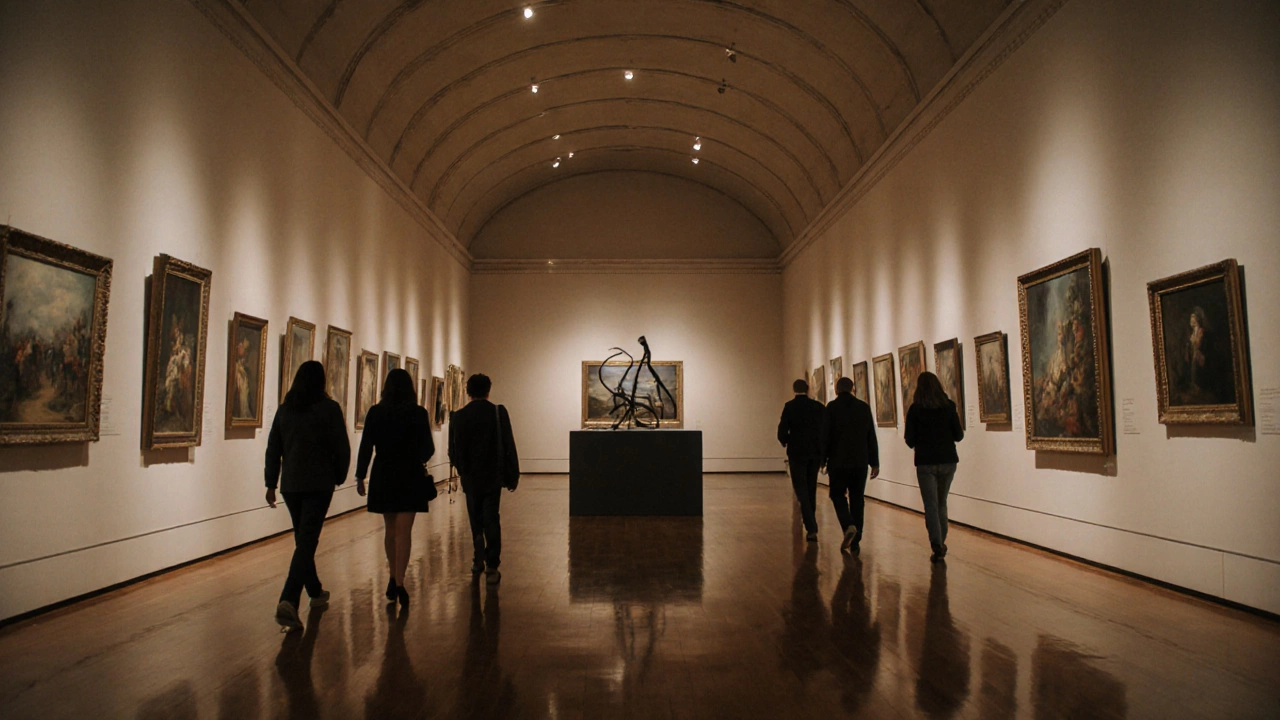
How to Choose the Right Format for Your Work
- Define your goal. If you need immediate sales and market exposure, a fair is the logical step. If you’re after critical feedback or a thematic platform, aim for an exhibition.
- Consider budget. Fair booth fees can be prohibitive for emerging artists without gallery representation. Exhibitions often cover costs through institutional budgets.
- Assess timeline. Fairs are short bursts; you need a work ready to ship quickly. Exhibitions allow longer lead times for installation.
- Think about audience. If your work appeals to collectors looking for investment, a fair is better. If it resonates with scholars or educators, an exhibition suits you.
- Evaluate long‑term impact. A successful fair can boost market value fast. A well‑written exhibition catalogue can become a lasting scholarly reference.
Case Studies
Case 1 - Emerging Painter at Art Basel Miami Beach. 2023 saw 300 emerging artists share 150 booths. One painter sold three large canvases for $12,000 each, covering the $10,000 booth fee and securing new collector relationships.
Case 2 - Solo Exhibition at the Tate Modern. In 2022, a mid‑career sculptor presented a site‑specific installation titled “Weight of Memory.” No works were for sale, but the exhibition attracted 40,000 visitors, led to two major commission offers, and resulted in a feature in ArtForum.
Quick Checklist for Artists
- Identify whether your priority is sales or narrative.
- Research fair application deadlines (often 9‑12 months ahead).
- Prepare high‑resolution images and shipping logistics.
- For exhibitions, draft a concise curatorial statement.
- Budget for travel, insurance, and installation costs.
- Network with curators, gallery reps, and fellow artists early.
Common Misconceptions
Many think an art fair is just a bigger gallery and an exhibition is just a smaller museum. The truth is more nuanced: fairs are commercial ecosystems driven by sales metrics, while exhibitions are cultural projects guided by curatorial intent. Neither is inherently superior; each serves a distinct role in an artist’s career.
Future Trends (2025‑2027)
Hybrid models are emerging. Digital platforms now allow fairs to host virtual booths, giving artists worldwide access without physical travel. Meanwhile, museums are experimenting with “fair‑style” openings-short, high‑energy events that blend sales and scholarship.
Climate‑focused fairs are also gaining traction, with “green” booth materials and carbon‑offset shipping becoming standard. Exhibitions are increasingly commission‑free, allowing artists to retain rights while still gaining institutional prestige.
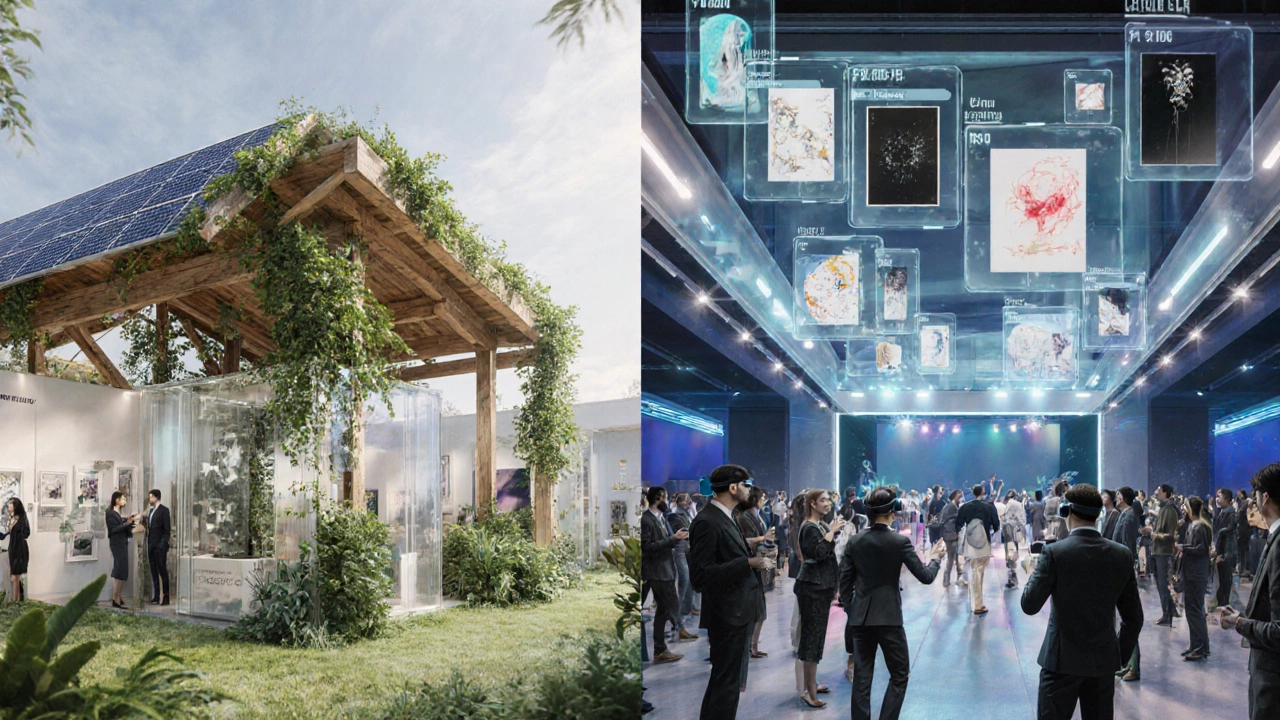
Is it better for an emerging artist to start with a fair or an exhibition?
It depends on the artist’s goals. If immediate sales and market visibility are priority, a well‑chosen fair (often a regional or niche fair) can deliver quick results. If the artist seeks critical feedback, a curated exhibition-perhaps in a university gallery or a smaller museum-offers a platform for deeper engagement without the high upfront cost of a fair booth.
Can artworks be sold at an exhibition?
Yes, but it’s not the primary focus. Some institutions have a sales desk or partner galleries that handle transactions. Often, sales are managed off‑site after the show, especially for high‑value works.
What’s the typical commission rate at an art fair?
Commission ranges from 30 % to 50 % of the sale price, depending on the gallery’s reputation and the fair’s policies. Some fairs negotiate lower rates for emerging galleries.
Do exhibitions require artists to provide insurance?
Most institutions ask artists to insure their works during transport and while on display. However, larger museums often include insurance as part of the exhibition contract.
How can I find upcoming art fairs or exhibition calls?
Websites like ArtFairCalendar.com, the International Association of Art Administrators, and museum newsletters list deadlines months in advance. Social media groups for regional art scenes are also valuable sources.
